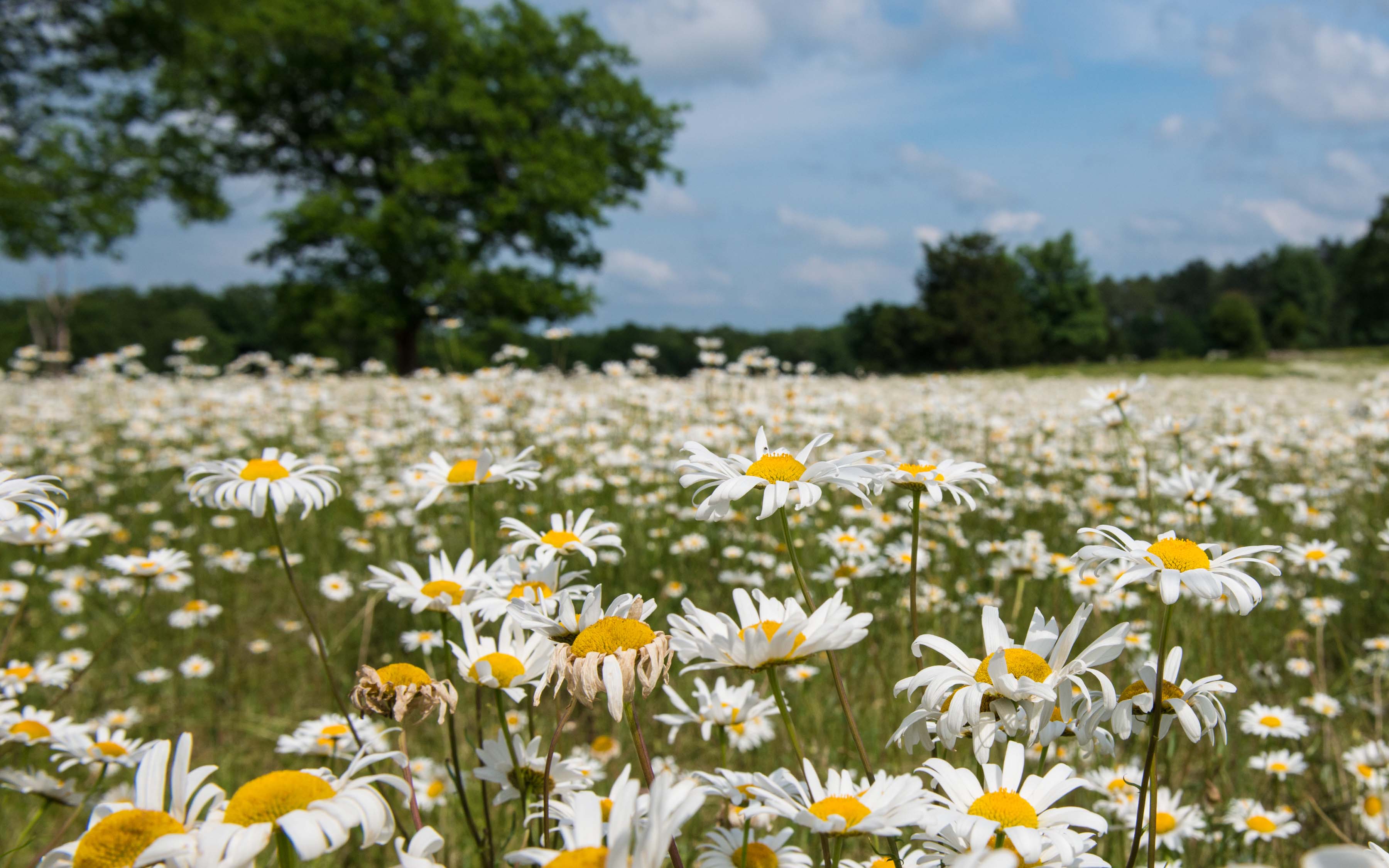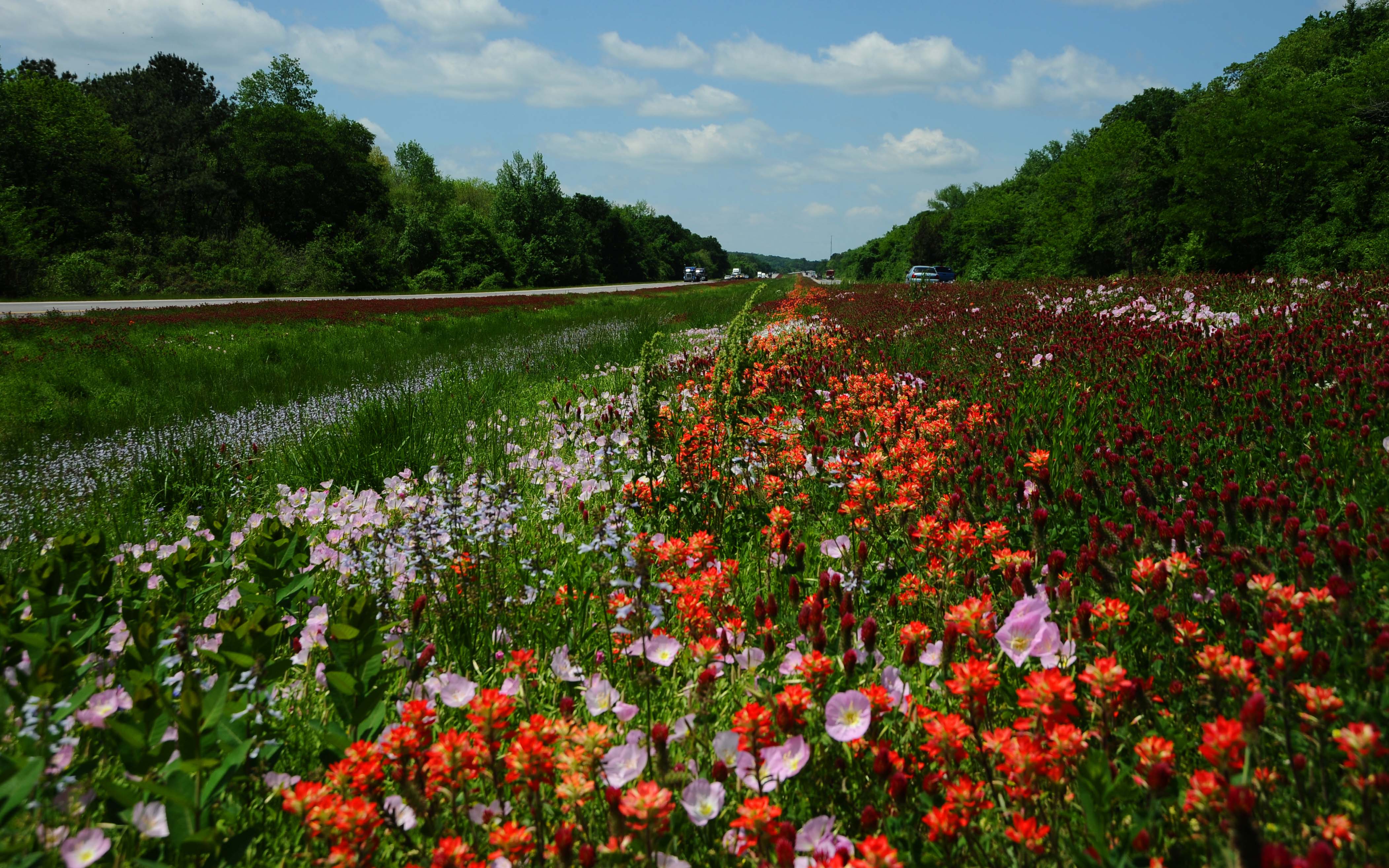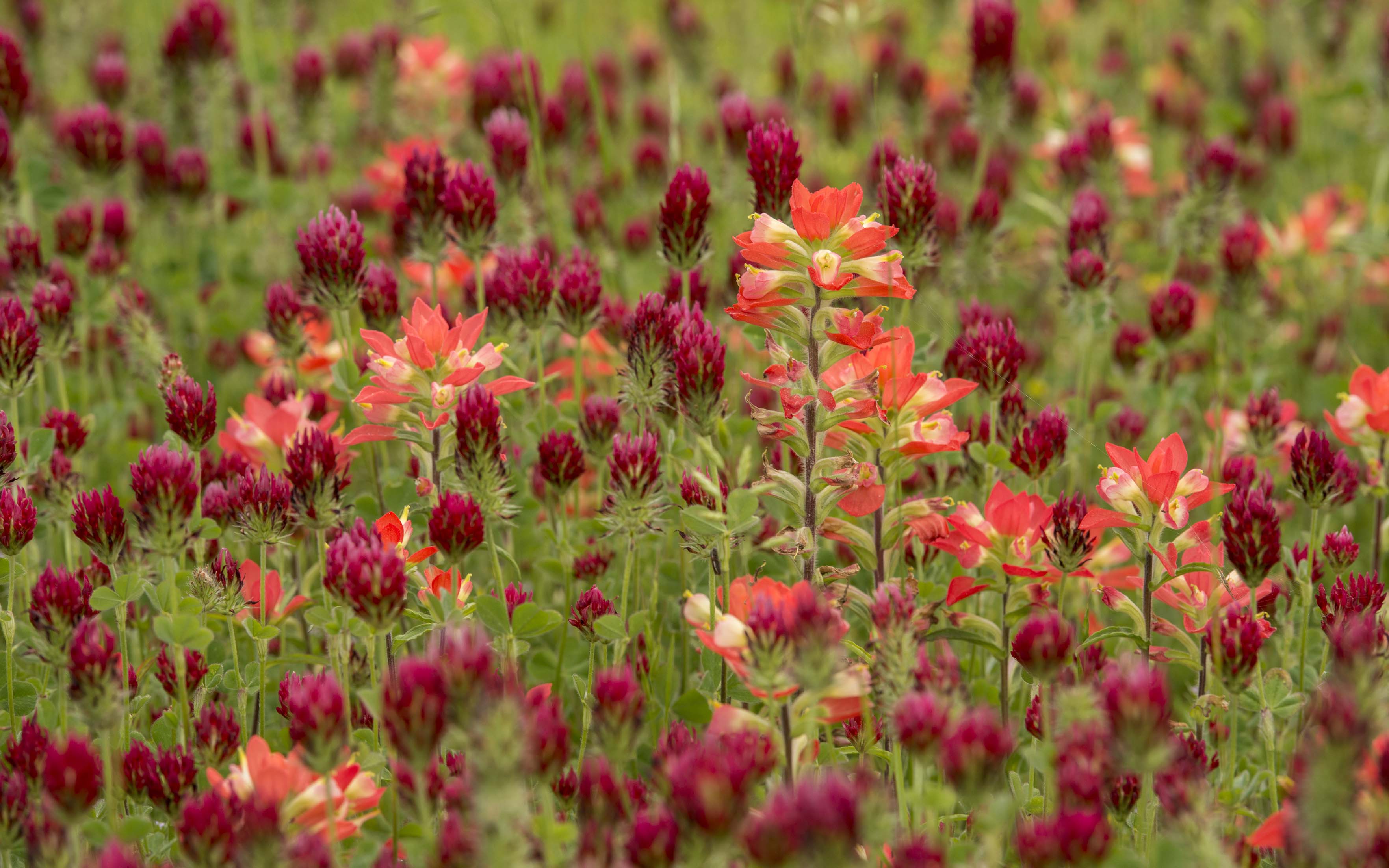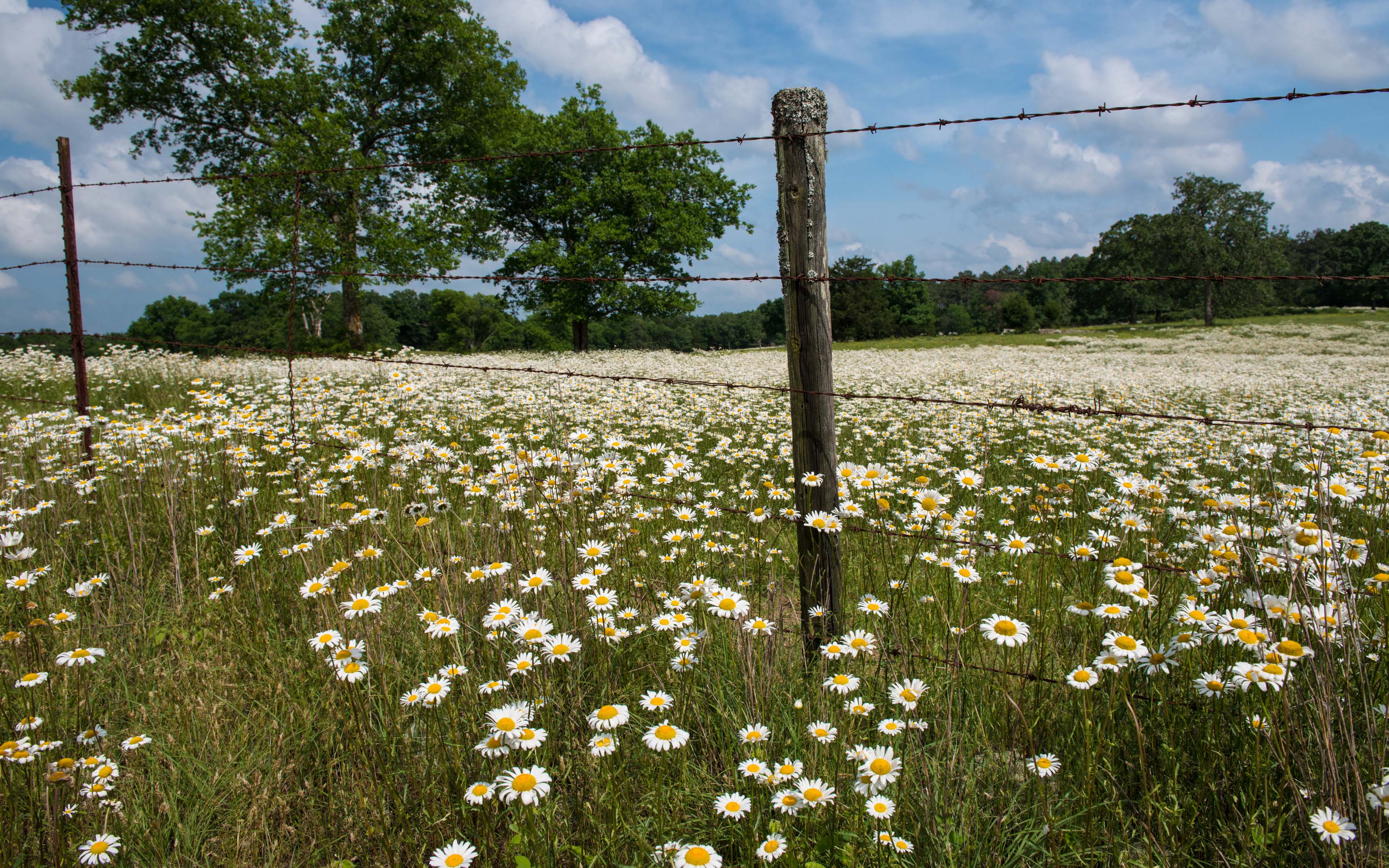Wildflowers: A guide to making your drive through Arkansas more colorful
May 21-27, 2018
By Alyx VanNess
If you’ve driven on any of the highways in and around Little Rock lately, chances are you’ve noticed an array of flowers popping up along the side of the road. US-65 near Burns Park is scattered with Showy Evening Primrose, while Baby Blue Eyes dot the medians on Interstate 40 near Conway.
Kayti Ewing, a botanist with the Arkansas Department of Transportation (ArDOT), says this is no accident.
“The Arkansas Department of Transportation has had a wildflower program since 1983,” Ewing says. “This program was originally promoted as a national initiative by Lady Bird Johnson in 1983 as an agreement between Federal Highways Administration (FHWA) and the National Federation of Garden Clubs.”
Inspired by the wildflowers in bloom along Texas’ highways during her travels home from the nation’s capital, the initiative was made possible by an even earlier push from Ms. Johnson. She encouraged the planting of wildflowers among all major American roadways through the 1965 Highway Beautification Act, signed by her husband, President Lyndon B. Johnson.
The Act, along with the FHWA initiative, allows ArDOT to allot an annual budget using federal funds to plant wildflowers along state highways.
Since 1983, the Environmental division of ArDOT has developed three focus areas in the program; Operation Wildflower, Wildflower Routes, and the Wildflower Area Sign Program.
Operation Wildflower is ArDOT’s oldest program, which encourages public sponsors to donate seeds to the department for planting along highway roadsides.
“It was very much a grass-roots effort. If a local garden club wanted to plant wildflowers along a stretch of highway, we would let them,” Ewing explains. “It was only later…that we began providing assistance with equipment and personnel to actually sow the seeds.”
With donations from various sponsors ranging from individuals whose yards share rights-of-way to schools groups to local garden clubs, the department moved into the Operation Wildflower phase. The program establishes new populations along roadsides identified by the Environmental division for their wide rights-of-way, site accessibility, and chemical and physical soil characteristics.
Ewing explains that considerations including existing native vegetation and new construction are weighed. Ultimately though, it is up to the wildflower seed’s sponsor.
“They can choose which stretch of highway they would like to plant, and all we need is the District Engineer to sign off on that site.”
Still, the department does check with local districts to ensure the chosen site won’t interfere with special maintenance requirements or private mowing practices.
The department generally recommends its Standard Wildflower Seed mix, which includes Purple Coneflower, Showy Evening Primrose, and Black-eyed Susan, to name a few. The mix is sown at a rate of four pounds per acre and used by the department after a highway construction project, when ground is already bare and prepared for successful seeding.
The Wildflower Routes program showcases already naturally occurring, native wildflower species along some of the older highway systems. Ewing says that identifying and establishing routes has saved the department both time and money.
“The wildflower programs have ultimately dictated how we manage our entire transportation system,” she says.
While clear zones, which extend ten to 30 feet from the pavement’s edge, are mowed throughout the year to maintain sight distances and protect pollinating insects from being hit, transition zones between the roadside and tree line are mowed only once per year to ensure successful dispersal of mature seeds and keep woody vegetation from encroaching closer to the roadway. The practice also keeps pollen sources in bloom longer for natural pollinators like bees and other insects.
“By mowing less area, we reduced costs associated with equipment operation and maintenance as well as personnel costs associated with mowing and herbicide applications.”
The Wildflower Area Sign Program was started in 1998. Carl Hunter, a former Arkansas Game and Fish Commission employee and one of Arkansas’ leading authorities on wildflowers, championed the initiative as a way to promote public awareness of native wildflower populations. With an additional recommendation from the Arkansas Native Plant Society, ArDOT began their new sign program, which erects signs that read ‘Native Wildflower Area’ where native populations bloom.
Ewing says, “The signs not only increase public awareness but prevent the areas from being mowed when the flowers are in bloom. The public is encouraged to inform the department of significant, beautiful, or rare wildflower populations occurring on our rights-of-way.”
The wildflowers are beautiful, but they’re more than that. The department provides pollinator habitat, increasing butterfly, bee, and other pollinator populations along the roadways where wildflower varieties have been maintained. When the Center for Biological Diversity reported in 2016 that the monarch butterfly population declined by eighty percent in just two decades, ArDOT’s Environmental division utilized the wildflower program to plant about 1,000 milkweed flowers, a plant species needed for monarchs to lay their eggs.
Since 1983, AHTD has beautified close to 1,000 miles of highway roadsides throughout Arkansas.
Ewing suggests several routes in particular for those looking for a scenic drive in the coming months.
Highways 23, 103, and 215 in Johnson and Franklin Counties are filled with a variety of Ozark-native wildflowers during late spring and early summer, and Highway 27 near Lake Ouachita hosts peak wildflower scenery in June and July.
Just like Lady Bird Johnson and her love of Texas wildflowers, Ewing has her favorite scenic drive.
“Highway 425 from Star City south to the Louisiana state line in the late summer and fall is the best!”
To find more information about the program and to see other wildflower routes, visit ArDOT’s website.






